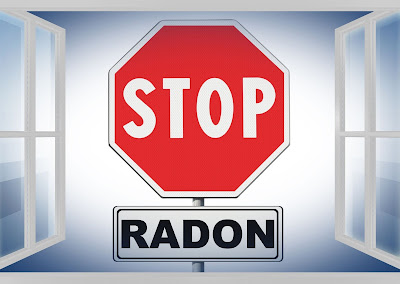Radon FAQ: General Questions about Radon Gas
Radon
What is radon?
Radon is an odorless, invisible, radioactive, tasteless gas.
Where is radon found?
Outdoors, radon is found in rocks and soil. It can also be found in hot springs and some spring waters. Indoors, it can be found in buildings, inside homes, schools, and offices.
Are radon concentrations the same everywhere?
No, radon concentrations differ from
What are the factors on which radon concentration depends?
Radon concentration depends on how much radon is in the ground under a structure, atmospheric conditions and how much ventilation happens in a house.
How does radon enter buildings?
Radon enters buildings directly from the soil through the lowest level in the building that is in contact with the ground. Cracks in foundations and walls, construction joints, gaps in suspended floors and around service pipes, cavities inside walls, and water supply are some of the more common entry points of radon into your home.
Radon Levels
How are radon levels measured?
Picocuries per liter of air, or pCi/L, is the usual measurement for the level of radon.
What are safe radon levels?
There is nothing called a safe radon level. Any radon exposure is risky. But according to the United States Environmental Protection Agency or the EPA, action needs to be taken if the radon level is 4 pCi/L or more. However, EPA also recommends that Americans can consider fixing their home for radon levels between 2 pCi/L and 4 pCi/L.
Read on for more Radon FAQ.
Health and Radon
What effect does radon have on your health?
Radon is the second leading cause of lung cancer in the United States. It can also exacerbate other breathing problems, such as asthma.
Radon Testing
Why test for radon?
Testing is the only way to find out if you have a radon problem.
How to test for radon?
Short and long term kits are easily available in the market to test for radon levels in your home, office or school. You can also schedule a professional to come in and test for radon in your home.
When should you test for radon?
You need to test for radon at regular intervals, even if your radon levels are below 4 pCi/L.
If you are buying or selling your home, test for radon.
Radon Mitigation
What is radon mitigation?
Radon mitigation is the process by which a professional installs a system to reduce radon concentrations.
Do radon mitigation systems work?
Yes, radon mitigation systems can reduce radon levels by up to 99%.
Radon-Rid, LLC is a fully insured, licensed, and certified radon testing and radon mitigation company. For a consultation or more radon FAQ, visit their website https://www.radonrid.com.
About Radon-Rid, LLC:
Radon-Rid, LLC is a fully insured, licensed, and certified radon testing and radon mitigation company. We are certified by the PA-DEP (Pennsylvania Department of Environmental Protection) to perform radon testing and radon remediation services in Bucks County, Montgomery County, Chester County and Delaware County. Call us at (610) 624-6928 or contact Radon Rid to schedule or book an appointment to test your home for radon gas.
What is radon?
Radon is an odorless, invisible, radioactive, tasteless gas.
Where is radon found?
Outdoors, radon is found in rocks and soil. It can also be found in hot springs and some spring waters. Indoors, it can be found in buildings, inside homes, schools, and offices.
Are radon concentrations the same everywhere?
No, radon concentrations differ from
- place to place
- one room to another and
- even from day to day
What are the factors on which radon concentration depends?
Radon concentration depends on how much radon is in the ground under a structure, atmospheric conditions and how much ventilation happens in a house.
How does radon enter buildings?
Radon enters buildings directly from the soil through the lowest level in the building that is in contact with the ground. Cracks in foundations and walls, construction joints, gaps in suspended floors and around service pipes, cavities inside walls, and water supply are some of the more common entry points of radon into your home.
Radon Levels
How are radon levels measured?
Picocuries per liter of air, or pCi/L, is the usual measurement for the level of radon.
What are safe radon levels?
There is nothing called a safe radon level. Any radon exposure is risky. But according to the United States Environmental Protection Agency or the EPA, action needs to be taken if the radon level is 4 pCi/L or more. However, EPA also recommends that Americans can consider fixing their home for radon levels between 2 pCi/L and 4 pCi/L.
Read on for more Radon FAQ.
Health and Radon
What effect does radon have on your health?
Radon is the second leading cause of lung cancer in the United States. It can also exacerbate other breathing problems, such as asthma.
Radon Testing
Why test for radon?
Testing is the only way to find out if you have a radon problem.
How to test for radon?
Short and long term kits are easily available in the market to test for radon levels in your home, office or school. You can also schedule a professional to come in and test for radon in your home.
When should you test for radon?
You need to test for radon at regular intervals, even if your radon levels are below 4 pCi/L.
If you are buying or selling your home, test for radon.
Radon Mitigation
What is radon mitigation?
Radon mitigation is the process by which a professional installs a system to reduce radon concentrations.
Do radon mitigation systems work?
Yes, radon mitigation systems can reduce radon levels by up to 99%.
Radon-Rid, LLC is a fully insured, licensed, and certified radon testing and radon mitigation company. For a consultation or more radon FAQ, visit their website https://www.radonrid.com.
About Radon-Rid, LLC:
Radon-Rid, LLC is a fully insured, licensed, and certified radon testing and radon mitigation company. We are certified by the PA-DEP (Pennsylvania Department of Environmental Protection) to perform radon testing and radon remediation services in Bucks County, Montgomery County, Chester County and Delaware County. Call us at (610) 624-6928 or contact Radon Rid to schedule or book an appointment to test your home for radon gas.



Mga Komento
Mag-post ng isang Komento